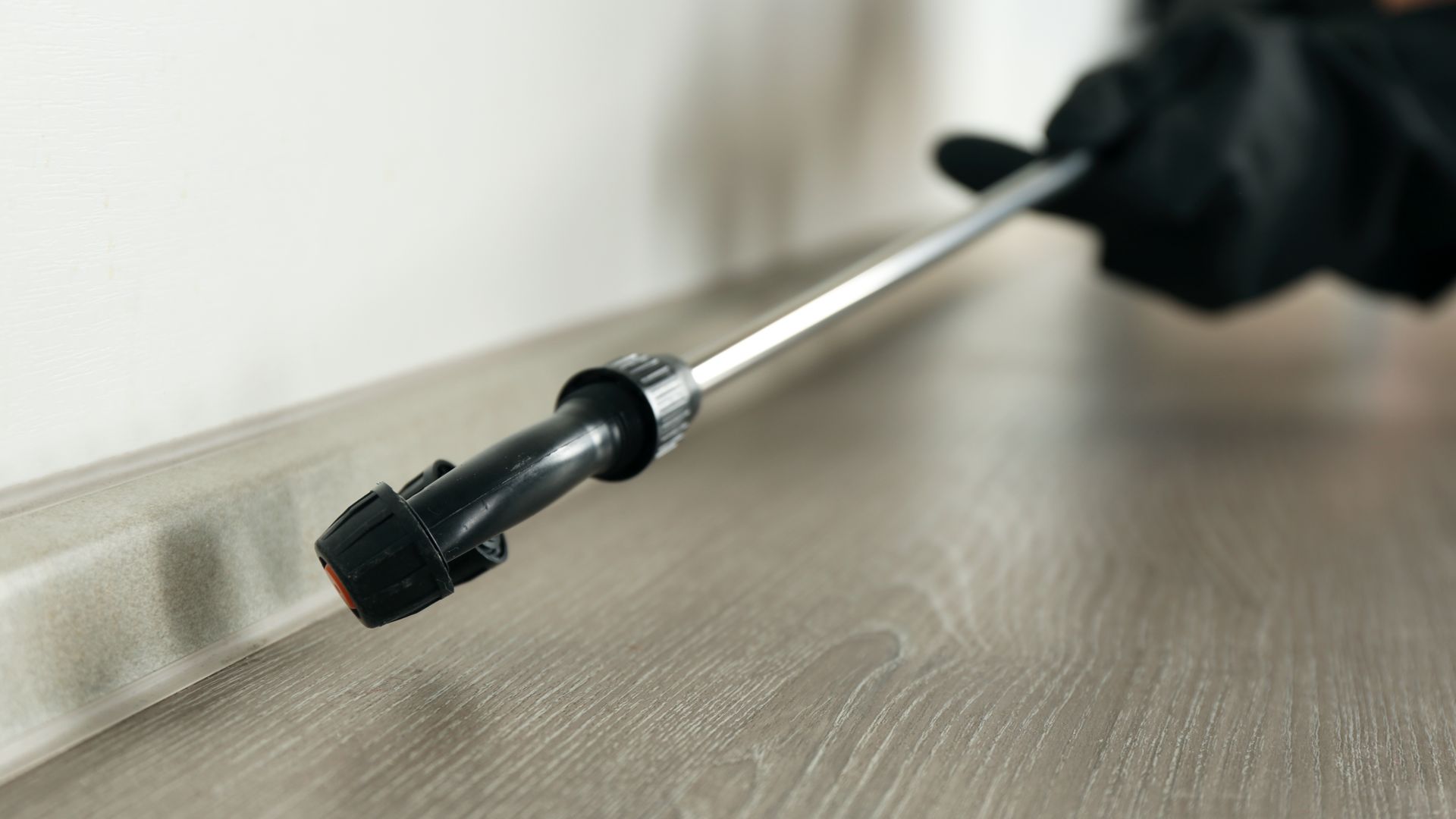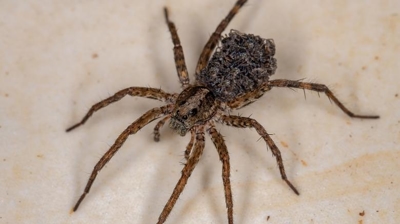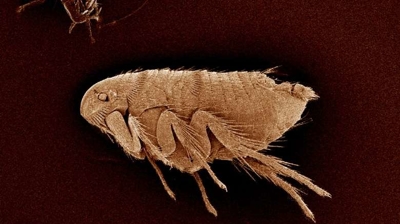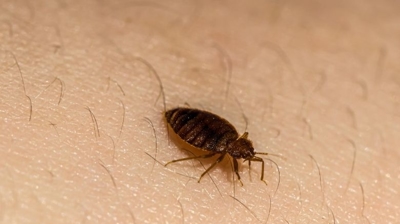
Slug Control Services

Slugs
Slugs, though often seen as harmless garden visitors, can actually be quite destructive and harmful in several ways:
- Damage to Plants and Crops: Slugs primarily feed on leaves, stems, flowers, and fruits. These mollusks often leave irregular holes, slime trails, and ragged edges on foliage. They particularly target tender seedlings and young plants, which can severely stunt growth or kill them. In agriculture and horticulture, heavy slug infestations can cause significant crop losses, particularly in vegetables like lettuce, cabbage, and strawberries.
- Spread of Plant Diseases: As slugs move from plant to plant, they can carry spores and pathogens on their slimy bodies. This can facilitate the spread of diseases such as Botrytis (gray mold) or other fungal infections. The feeding damage they cause can create openings in plant tissues, making it easier for pathogens to invade.
- Contamination of Food: Slugs can contaminate produce with their slime and feces, which may harbor bacteria or parasites. Though the risk is generally low for most home gardeners, in commercial settings, slug contamination can be a serious concern for food safety.
- Ecological Disruption: Some slug species are non-native and can outcompete local wildlife or disrupt ecosystems. By feeding on native plants, they may reduce biodiversity in gardens, parks, or natural areas.
- Structural and Aesthetic Issues: The mucous trails they leave can be unsightly on patios, garden furniture, and pathways. While slugs don’t eat wood or buildings, their slime can attract mold growth or create slippery surfaces, which may be a nuisance or minor hazard.
- Impact on Other Animals: Large slug populations can affect populations of birds, amphibians, and insects that feed on them, potentially altering the local ecological balance.
Slugs are most harmful because they directly damage plants and crops, spread disease, and, in some cases, disrupt ecosystems or contaminate food. While they are part of the natural environment, unchecked populations—especially of invasive species—can cause notable problems for gardeners and farmers alike.
Learn more: Do Slugs Bite?
Slug Removal
Getting rid of slugs is important for several practical and economic reasons, particularly in agriculture, gardening, and home landscaping. While these mollusks might seem relatively harmless, they can cause significant damage that justifies proactive control measures:
- Crop and Garden Damage: Slugs feed on leaves, stems, flowers, fruits, and seedlings, often leaving irregular holes and slime trails. Young plants are particularly vulnerable, and severe infestations can destroy entire crops or ornamental plants, reducing yields and affecting aesthetics. For gardeners and farmers especially, this translates directly into financial losses.
- Rapid Reproduction: Slugs reproduce quickly under favorable conditions, laying clusters of eggs in soil, under debris, or in hidden crevices. A small population can explode into a large infestation in a short period, making early intervention critical.
- Disease Transmission: Some slugs act as vectors for plant pathogens, including fungi and viruses, which can further weaken plants or spread disease throughout a garden or field. For example, they can carry the spores of Phytophthora species, which cause root rot and blights in crops.
- Damage to Infrastructure: Beyond plants, slug slime can stain walls, pathways, and outdoor furniture, creating maintenance issues in landscaped areas. Their presence in greenhouses or nurseries can be especially problematic, affecting both plant health and facility cleanliness.
- Ecosystem Imbalance: In non-native environments, slug populations can disrupt local ecosystems by outcompeting native species, eating plants critical to wildlife, or spreading pathogens to which native plants are not resistant.
- Consumer and Market Implications: In commercial agriculture, visible slug damage on produce can reduce marketability. Leaves with holes or fruits with feeding marks are often rejected by consumers and distributors, leading to economic losses.
Slug control is not just about minor inconvenience—it is a strategic measure to protect plant health, maintain economic viability in agriculture and horticulture, and prevent larger ecological or infrastructural problems.
Learn more: How To Get Rid Of Slugs
Slug Control
Hiring our professional pest control for slugs is often the most effective and efficient way to protect your garden, lawn, or commercial property. Here’s why our professionals are the best choice:
- Expert Identification: Not all slugs behave the same. Some are more destructive or invasive than others. Our professionals can identify the species, which determines the most effective control methods.
- Effective and Safe Treatments: Our professionals have access to slug baits, barriers, and molluscicides that are stronger and more effective than consumer-grade options, yet are applied safely to avoid harming pets, wildlife, or children. We can also implement mechanical controls (traps, barriers), and cultural methods (removing hiding spots, adjusting irrigation). Our professionals use a combination of strategies tailored to your property, ensuring long-term control rather than just a temporary fix.
- Preventive Measures: Our professionals identify areas where slugs thrive, such as damp, shaded spots or debris piles, and take steps to eliminate these breeding grounds. Instead of treating only when damage appears, our professionals implement plans to prevent future infestations.
- Protecting Your Plants and Property: Slugs can devastate seedlings, vegetables, flowers, and ornamental plants. Our professional control reduces the risk of economic or aesthetic damage. Since slugs can spread fungal and bacterial pathogens, controlling them reduces the likelihood of plant disease outbreaks.
- Time and Convenience: Homeowners often spend hours manually removing slugs, setting traps, and reapplying treatments. Our professionals handle slug control efficiently. Effective control prevents recurring infestations, which can be more expensive in the long run if you rely solely on DIY solutions.
- Safety and Compliance: Some slug control products are toxic if misused. Our professionals are trained in correct handling, application rates, and disposal. Experts apply treatments in ways that minimize environmental impact and comply with local regulations.
Hiring our professionals ensures that slug infestations are addressed safely, effectively, and comprehensively. Our professionals not only eliminate current problems but also prevent future issues, protect your plants, and save you time and effort.
Slug Exterminators
Hiring our local exterminators instead of a national company for slug control offers several distinct advantages:
- Deep Knowledge of Local Conditions: Our local exterminators understand the specific climate, soil types, vegetation, and microhabitats where slugs thrive in your area. This allows us to anticipate infestation patterns, identify breeding sites accurately, and target our treatments where they are most effective. National companies often rely on broad, standardized approaches that are less attuned to local ecological nuances.
- Customized Treatment Plans: Slug species and their behaviors can vary regionally. Our local professionals design a control plan that fits your property’s specific needs, choosing the most effective baits, barriers, and cultural practices. National services frequently use “one-size-fits-all” protocols that often overlook subtle local factors, reducing effectiveness.
- Faster Response Time: Slug infestations can escalate quickly. Our local exterminators can often respond immediately, inspect your property in person, and start treatments without waiting for centralized scheduling or routing. National chains may have longer lead times due to logistics and centralized dispatch systems.
- Ongoing Support and Monitoring: Effective slug control is rarely a single treatment. Our local team provides regular follow-ups, monitors populations, and adjusts our strategies as conditions change, offering a more adaptive and responsive service. National firms often limit follow-ups or charge extra for visits that a local company would include as part of an ongoing relationship.
- Better Understanding of Local Regulations: Pesticide usage and environmental regulations can vary by state, county, or municipality. Our local exterminators are familiar with these rules and ensure our treatments comply with applicable regulations while minimizing environmental impact. National companies often apply generic protocols that are not optimized for compliance in every location.
- Accountability and Reputation: Our local team relies heavily on our community reputation and word-of-mouth referrals. We are more invested in delivering thorough, high-quality service and building long-term relationships with our clients. National chains often prioritize standardized service metrics over individualized care, making it harder to hold them accountable for results.
- Cost-Effectiveness: Without the overhead of a large corporate structure, our local team provides competitive pricing for our tailored services. We recommend the exact combination of cultural, mechanical, and chemical controls needed, reducing unnecessary treatments and costs.
Our local exterminators provide precision, speed, adaptability, and personal accountability—qualities that are particularly important for controlling slugs, whose behavior and habitats are highly site-specific.
What Do Slugs Look Like?
Slugs are soft-bodied, slimy mollusks that are closely related to snails, but they lack a prominent shell. Their appearance can vary depending on species, age, and environment, but here are the general characteristics:
- Elongated and flexible: Slugs have a long, cylindrical, or slightly flattened body.
- No hard shell: Unlike snails, they don’t have an external shell, though some species may have a small internal or vestigial shell.
- Variety of shades: Slugs can be brown, gray, black, yellow, greenish, or even reddish.
- Patterns: Some have spots, stripes, or mottled patterns along their body.
- Varies by species: Most garden slugs are 1–3 inches long, but some species, like the Leopard Slug (Limax maximus), can reach up to 6–8 inches.
- Two pairs of tentacles: The upper pair is longer, retractable, with eye spots at the tips for sensing light. The lower pair is shorter, used for smell and touch.
- Retractable: They can pull their tentacles back if threatened.
- Slimy surface: Slugs secrete mucus to help them move and retain moisture. The slime can also protect them from predators and irritation.
- Shiny appearance: The body often looks wet or glossy because of the mucus.
- Ventral “foot”: The flat underside is called the foot, which contracts and expands in waves to allow crawling movement.
- Muscular and slimy: It leaves a glistening slime trail behind wherever the slug moves.
Even if you don’t see the slug itself, silvery slime trails on leaves, garden beds, or paths are a clear sign of their presence. Most slugs are more active at night or during damp, overcast conditions, which is why they’re often found in moist areas under mulch, rocks, or leaf litter.
Where Are Slugs Found?
Slugs thrive in environments that are moist, shaded, and protected, since they are prone to drying out. Here’s where you’re most likely to find them:
- Leafy vegetables: Lettuce, cabbage, spinach, and other tender plants are prime targets.
- Flower beds: Delicate flowers like hostas, begonias, and dahlias often suffer slug damage.
- Mulched areas: Mulch retains moisture, creating ideal hiding spots.
- Rocks, logs, and boards: Slugs hide under anything that provides shade and moisture during the day.
- Garden tools or pots: Upturned pots, empty containers, and other garden clutter can become slug refuges.
- Damp lawns: Thick, moist grass, particularly in shaded areas or near irrigation, can harbor slugs.
- Edges and borders: Slugs often concentrate along the edges of lawns, flower beds, or walkways where moisture is higher.
- Organic matter: Decomposing plant material provides both food and moisture, making compost heaps attractive slug habitats.
- Moist, dark areas: In some homes, slugs can enter damp basements or crawl spaces, especially if doors or vents are not sealed.
- Indoor plants: Overwatered indoor plants in shady spots can sometimes attract slugs.
- Irrigated areas: Frequent watering or poorly draining areas keep soil moist, which slugs love.
- Ponds or water features: Slugs may congregate near water features where the surrounding ground stays damp.
- Nocturnal habits: Slugs are mostly active at night or during overcast, rainy days. Even if you don’t see them during the day, they’re likely hiding in any of the above locations.
Anywhere that is dark, damp, and offers food or shelter is likely to attract slugs. For gardeners, this often means mulched flower beds, vegetable gardens, compost piles, and shaded lawn areas.
What Do Slugs Eat?
Slugs are herbivorous or detritivorous mollusks, meaning they primarily feed on plant material and decaying organic matter. Their diet can be surprisingly broad, which is why they’re considered such destructive garden pests:
- Leaves: Tender foliage is their favorite. They chew irregular holes in leaves of vegetables, flowers, and ornamentals.
- Seedlings and young plants: Slugs particularly target young plants because the soft tissue is easier to eat, often killing seedlings outright.
- Flowers and stems: Slugs may nibble petals, stems, and buds, damaging the aesthetic and structural integrity of ornamental plants.
- Fruits and vegetables: They sometimes eat ripe fruits like strawberries, tomatoes, or cucumbers, leaving slime trails behind.
- Compost and mulch: Slugs also feed on decomposing leaves, stems, and other organic debris, which is why compost piles can become slug hotspots.
- Dead plants: Even fallen leaves or dying plants provide food, which helps them survive when fresh vegetation is scarce.
- Mushrooms and molds: Some slug species eat fungi, including mushrooms in gardens and lawns.
- Algae: Slugs may scrape algae off rocks, soil surfaces, or garden structures.
- Soft fruits on the ground: Overripe or damaged fruits attract slugs.
- Seedlings of weeds: They sometimes help “weed control” by eating certain young weeds, although this is incidental.
- Nocturnal feeding: Slugs mostly feed at night or during damp, overcast conditions to avoid drying out.
- Continuous nibbling: They leave characteristic irregular holes and silvery slime trails.
- Moisture dependency: Their feeding is closely tied to moisture levels; dry conditions can drastically reduce activity.
Slugs are opportunistic feeders that prefer soft, succulent plant tissue, but they will also consume decaying matter, fungi, and algae. This wide-ranging diet is why they’re so persistent in gardens and agricultural areas.
Slug Life Cycle
The life cycle of slugs is relatively simple but can lead to rapid population growth under favorable conditions. Understanding their life cycle is important for effective control:
Egg Stage
- Appearance: Slug eggs are small, round, and translucent or whitish, often appearing in clusters.
- Laying location: Slugs lay eggs in moist, protected areas, such as under leaves, mulch, stones, logs, or in soil crevices.
- Quantity: Each slug can lay 30–80 eggs per batch, and some species lay multiple batches in a season.
- Incubation period: Eggs usually hatch in 2–4 weeks, depending on temperature and moisture. Cool or dry conditions can slow development.
Juvenile Stage
- Appearance: Juvenile slugs look like smaller versions of adults but are paler and more delicate.
- Behavior: They immediately begin feeding on soft vegetation and decaying matter.
- Growth: Juveniles grow rapidly under moist, favorable conditions, shedding mucus to move and protect themselves.
- Vulnerability: This stage is highly susceptible to predators, dehydration, and environmental hazards.
Adult Stage
- Appearance: Fully grown slugs vary by species but are generally 1–8 inches long, soft-bodied, and slimy.
- Reproduction: Most slugs are hermaphrodites, meaning each individual has both male and female reproductive organs. They can self-fertilize or mate with another slug.
- Lifespan: Adult slugs typically live 1–6 years, depending on species and environmental conditions.
- Feeding: Adults continue to feed on plants, fungi, and decaying matter, causing the most noticeable damage.
Reproduction and Seasonal Patterns
- Breeding season: In temperate climates, breeding usually occurs in spring and fall when moisture levels are high. Some species may reproduce year-round in mild, damp environments.
- Egg-laying frequency: Adult slugs can lay multiple clutches of eggs per season, allowing populations to grow quickly.
- Dormancy: In unfavorable conditions (extreme heat, drought, or cold), slugs can enter a dormant state, burrowing into soil or hiding under debris until conditions improve.
Moisture is critical at all stages; eggs, juveniles, and adults are all vulnerable to drying out. Slugs are hermaphroditic, which increases reproductive efficiency. Rapid reproduction and survival strategies (hiding, mucus secretion, dormancy) make slug populations difficult to control without consistent management.

Hear From Our Happy Customers
-
"Great Communication"
Tech was on time, communication was great, and he accommodated my needs.
- Alonzo W. -
"Wonderful Service"
Wonderful service. Jarvis is great. Took care of everything I needed. Thank you!
- Henry P. -
"Very Knowledgeable"
The tech that arrived was courteous, professional, and very knowledgeable. He was Great.
- Uerial I. -
"Professional & Considerate"
I’m pleased with Miche services. Jarvis came today. Professional and considerate. Thank you!
- Judy B. -
"Exceeds Expectations"
I can’t say enough positive things about this company... The tech that came out, Jarvis went above and beyond my expectations. Thank you guys, I will continue using your services.
- Jake M. -
"Fantastic & Patient"
Jarvis was fantastic and patient. He answered my questions with an in-depth explanation and addressed all of my areas of concern. Would love for him to be my assigned tech going forward. Well done!
- Yonnette M.



